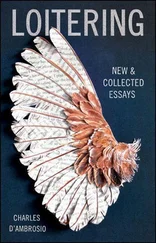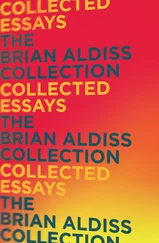* * *
Charles V entrusted Magellan with the supreme command of a flotilla of five ships, with a total crew of 237 men. Of Magellan himself, we know very little. His original name was Fernão de Magalhaes; he was probably born around 1480 in northern Portugal. It seems that he was a soldier much more than a seaman. He served for seven years in the Portuguese possessions in India and on the Malay Peninsula; there, he acquired his knowledge of the East and his experience of the sea; he distinguished himself for his bravery in battle. His officers and crew were in the main subjects of the Kingdom of Castile (mostly Andalusians and Basques); there was also a strong cosmopolitan component: some thirty Portuguese, twenty Italians (mostly Genoese), a few Frenchmen, some Greeks, a few Flemish. The ships were fairly small, three-masted, twenty-odd metres in length — barely the size of a modern super-yacht. On board, the men were crowded into a minuscule space.
Provisions comprised wine, oil, vinegar, sea biscuit, anchovies in barrels, smoked fish, smoked bacon, beans, lentils, flour, garlic, onions, casks of cheese rubbed in oil. These provisions were to prove insufficient during the crossing of the Pacific, the immensity of which no one could have foreseen. What is worse, they did not include any food that could have prevented scurvy, a dreadful illness whose actual cause was still not understood, though in fact it is fairly simple: it results from a vitamin deficiency that can easily be remedied by drinking lime juice and eating sauerkraut (as Captain Cook successfully instructed his sailors to do some 250 years later). Scurvy was to kill half the crew — more than military engagements, accidents and all other diseases combined.
Detailed inventories of the supplies and equipment have been preserved; for instance, there were “eight chamber pots and three rat traps for each ship; five large drums and twenty small drums for entertainment.” There were also various presents and goods for barter: “200 red caps, 200 red handkerchiefs; 20,000 small bells of three different sorts; 400 dozen German knives of very inferior quality; 50 dozen scissors; 1,000 mirrors; 1,000 combs.”
Sea charts and navigation instruments were wretchedly inadequate; longitude could not be calculated; speed and distance covered were assessed through crude and grossly inaccurate estimation. And even if the navigators had been able to determine the exact coordinates of their position, most of the time this could hardly have amounted to more than a tiny point in the middle of a huge blank.
Finally, it should be noted that two chaplains, with all their equipment (sacred vases, liturgical vestments, altars), were attached to the expedition, which had a significant religious and apostolic character — as we shall see later on.
The flotilla left Spain in September 1519. In December, it reached Brazil, where it dropped anchor. The crew proceeded ashore for the execution of a ship’s master (each ship was under the command of a captain, seconded by a master and a pilot or navigator): on the way, Magellan had sentenced him to death for sodomising a ship’s boy.
Then the flotilla sailed south, for as long as the season allowed. Days became shorter; the weather turned cold and rough. Discontent developed among the Spanish captains, as Magellan refused fully to disclose his plans to them.
Magellan decided that the ships should lie up for winter in a desolate cove of the Patagonian coast. A mutiny broke out; one captain involved in the rebellion was killed on the spot; another was captured, sentenced, beheaded and quartered ashore. As to the true leader of the rebellion and his main accomplice — one of the priests — they were both marooned on a deserted beach, having been provided with, in total, one sword and a bottle of wine. They were never heard of again. This false clemency — more cruel, in fact, than death — was probably due to the fact that the first was related to a Spanish grandee (he was the illegitimate son of an archbishop) and the other was a man of God.
After a grim wintering of five months (in that latitude, winter days have only four or five hours of light), from early April to the end of August, the flotilla — which, by then, had lost one ship, when a sudden gale drove it ashore and destroyed it — pursued its southward course. In October 1520, one year and one month after leaving Spain, Magellan finally discovered the entrance of the passage for which he had searched with such obstinate passion, and which was to carry his name. The Magellan Strait is some 600 kilometres long; for the most part, it is wide and deep, but also scattered with reefs; it follows a meandering course at the foot of tall snowy mountains from which blasts of icy winds blow down with sudden violence. Near the end of the strait, when the crew of the longboat that had been sent to reconnoitre returned and reported they had seen the open sea, “Magellan in his joy began to cry.” It is the only display of emotion that was ever recorded of him.
Magellan had taken thirty-four days to sail the length of the strait. A good half-century later, Drake made the same crossing in sixteen days — in winter! — with the help of a favourable wind. However, after this time it was seldom used, as the strait is so hazardous and difficult to negotiate. For sailing ships, the best way is further south; it was discovered in 1616 by a Dutch navigator, the first ever to go round Cape Horn — which he named after his native town, Hoorn.
The flotilla — which by now was reduced to three units (one ship had deserted at the entrance of the strait and returned to Spain, where, on arrival, its crew was thrown in jail) — entered the Pacific Ocean, which it took nearly three months to cross, following a diagonal course, south-east to west-north-west, from the exit of the strait to the island of Guam. The crossing was horrendous. Having exhausted their food supplies, the men were in their hunger gnawing the baggy-wrinkle of the rigging. Pigafetta, the Italian secretary who kept a record of the voyage, described their wretched condition:
Wednesday, 23 November 1520. We came out of the Strait and entered the Pacific Sea, on which we remained three months and ten days without having any fresh supplies. We were eating old biscuit that had turned into dust, all full of worms and the urine stench of rats which had eaten the better part of it; for drink, we only had a stinking yellowish water. We also ate the oxen hides that serve as chafe-guard on the mizzen antenna; having been long exposed to the sun and the weather, they had become very tough; we marinated them in sea water for four — five days and grilled them before eating. We also ate sawdust and rats…
The worst horror was the rottening scurvy, which turned its victims into walking corpses before killing them: “their gums became so swollen, they could not absorb any food and starved; those who survived washed their mouths with urine and sea water.”
Blindly missing the Polynesian archipelagos, the ships crossed the vastness of the Pacific Ocean without seeing land, with the sole exception of two tiny islands — uninhabited and unapproachable. Modern commentators have attempted to identify them as various atolls; but their original descriptions suggest forbidding cliffs of volcanic origin. I wonder if they could have been the islands of Pitcairn and Henderson?
After a short stop in Guam, where fresh supplies revived the crew, the ships sailed to the Philippines. There, on the island of Cebu, Magellan established friendly relations with the local king. After one week, the king expressed his desire to become a Christian. He was thus baptised, together with the queen and 2,000 of their subjects. A makeshift church was promptly built; big crosses were erected on top of hills nearby. Magellan then suggested imposing the authority of the “Christian king” over all of his neighbours. When one of them rebuffed his interference, Magellan decided to punish him — and to use the opportunity to show the Christian king the invincible military superiority of his new friends and protectors. Taking only forty men with him in the longboat, he landed on the island of the recalcitrants; there, ambushed by a large army, he was killed with six of his companions after a brief and desperate fight.
Читать дальше












